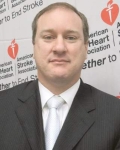EXPERT ANALYSIS FROM THE ANNUAL PERSPECTIVES IN RHEUMATIC DISEASES
Rheumatologists’ understanding of the spectrum of spondyloarthritis is undergoing an evolution that has revealed an underrecognition of the disease, particularly in women, but regulatory recognition of the spectrum of disease in the United States has yet to catch up with reality, according to Dr. Philip Mease .
More sophisticated imaging and laboratory techniques has meant that spondyloarthritis (SpA) is being discovered in up to twice as many people as originally thought, many of whom are women, said Dr. Mease, director of rheumatology research at Swedish Medical Center and clinical professor at the University of Washington, both in Seattle.
It’s not that SpA occurs as frequently in women as in men, but that it presents in a less-severe form with often little visible x-ray damage but with evidence of inflammation on MRI or in lab tests, he said at the annual Perspectives in Rheumatic Diseases held by Global Academy for Medical Education.
“These patients can be just as significantly impacted as patients with more ‘objective’ ankylosing spondylitis and can benefit as much from therapy such as anti-TNF [tumor necrosis factor] medications,” he said.
Evidence shows the prevalence of all spondyloarthritides in the United States is 0.346%-1.31%, compared with a rheumatoid arthritis prevalence of 0.6%-1.0%. Data from the German spondyloarthritis inception cohort has shown that the burden of disease in ankylosing spondylitis and nonradiographic axial SpA (nr-axSpA) is similar, Dr. Mease said.
The Assessment of SpondyloArthritis Society (ASAS) classification criteria ( Ann Rheum Dis. 2009;68:777-83 ) have gone some way toward identifying patients earlier, he said, but the biggest controversy surrounding the management of nr-axSpA in the United States has been the Food and Drug Administration’s lack of recognition of the disease, making it difficult to treat patients early.
The FDA is concerned about the potential for misdiagnosis and inappropriate use of anti-TNFs for these noninflammatory conditions, he said. “They readily understand that patients who are MRI positive or CRP [C-reactive protein] elevated and x-ray negative exist and are significantly affected by their disease, but they are also aware that there can be similarity of symptomatology between these types of patients and patients with mechanical or degenerative spine disease and/or fibromyalgia.”
As such, there is a need for more information on the natural history of the disease from clinical registries and trials in order to gain more understanding on how to accurately diagnose patients, he said.
More education to U.S. physicians is also needed, he added, noting that this particular controversy is not present in other parts of the world, such as the European Union, where etanercept, adalimumab, and certolizumab pegol have been approved by the European Medicines Agency for the treatment of nr-axSpA.
“There is need for better understanding about this patient population and better education of health-care providers to get them to think about this condition and refer their patients to rheumatologists for evaluation and appropriate therapy,” he added.
Dr. Mease disclosed that he has received research grants, consultation fees, and/or speaker honoraria from AbbVie, Amgen, Biogen, Bristol-Myers Squibb, Celgene, Genentech, GlaxoSmithKline, Janssen, Lilly, Merck, Novartis, Pfizer, and UCB. Global Academy for Medical Education and this news organization are owned by the same parent company.




